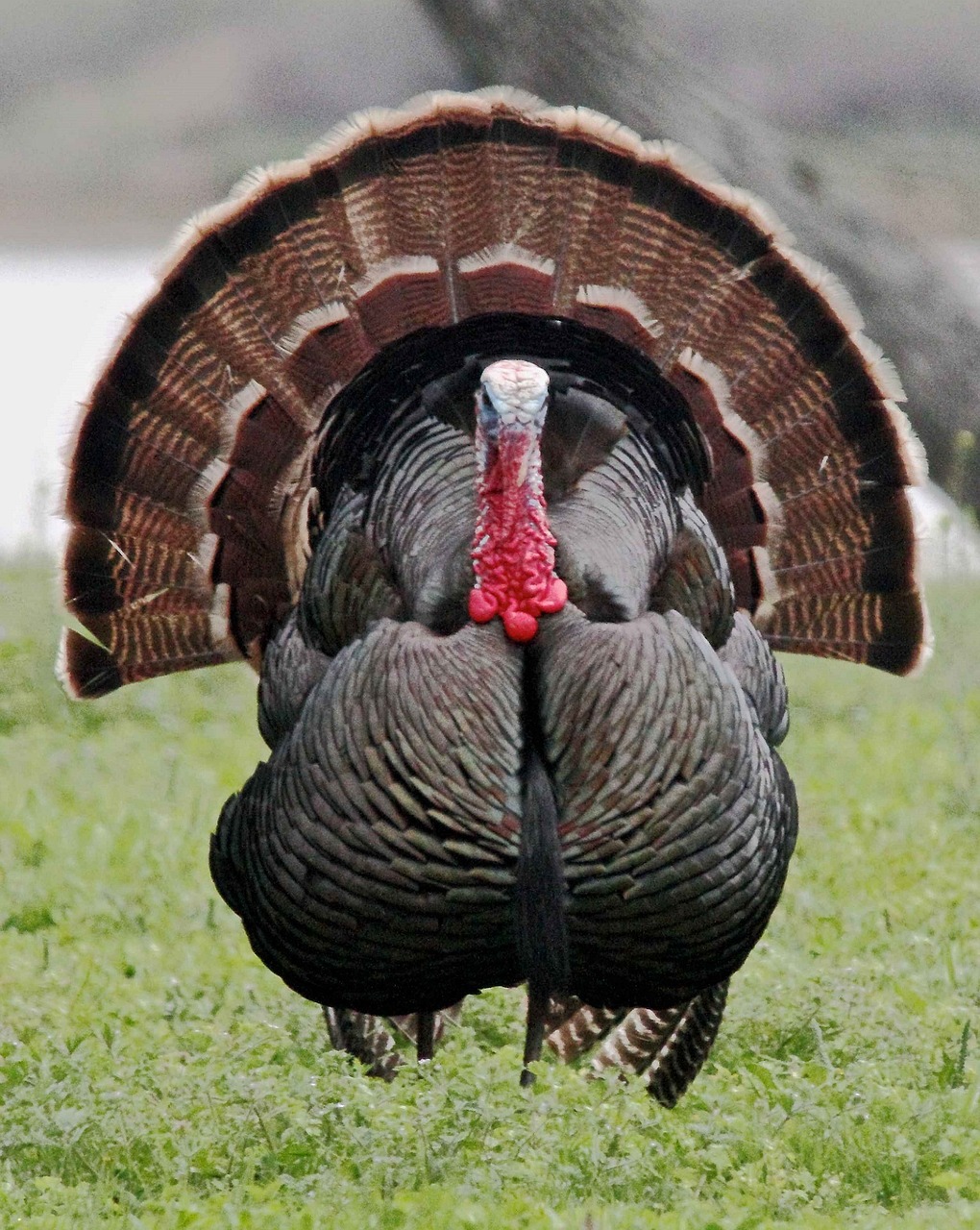Step right up and test your wild turkey knowledge with this fun trivia game that is fun for both adults and kids! Get your family together to play and see how well you know our feathered friends—just in time for Thanksgiving! (Check your answers at the end of the article.)
1. Can turkeys fly?

A) Yes; in fact, wild turkeys have been clocked at speeds of up to 60 miles per hour!
B) Yes, but they only do so when escaping from predators.
C) No, they don’t have enough feathers to support flight.
D) No, they are too heavy to be aerodynamic.
2. What do turkeys eat?
A) Fruits and berries
B) Leaves and grass
C) Insects
D) All of the above.
3. Where do turkeys sleep?
A) On the ground.
B) In bushes.
C) In trees.
D) All of the above.
4. What are male turkeys called?
A) Toms
B) Gobblers
C) Jakes
D) All of the above.
5. What are female turkeys called?
A) Ovids
B) Jennies
C) Jills
D) Pens
6. What are baby turkeys called?

A) Kits
B) Chicks
C) Poults
D) Whelps
7. What is the name for a group of turkeys?

A) Passel
B) Muster
C) Sentry
D) Rafter
8. What is the name for the flap of skin hanging over a turkey’s beak?
A) Wattle
B) Beard
C) Snood
D) Spur
9. What is the name of the flap of skin under a turkey’s chin?

A) Wattle
B) Beard
C) Snood
D) Spur
10. What color is a wild turkey’s head?
A) Red
B) Pink
C) White
D) Any of the above.
11. How fast can turkeys run?
A) 10 miles an hour
B) 15 miles an hour
C) 20 miles an hour
D) 25 miles an hour
12. How many stomachs does a turkey have?
A) Just one, but it serves two functions.
B) Two: the glandular stomach and the gizzard.
C) Three: the reticulum, the omasum, and the abomasum.
D) Four: the reticulum, the intestine, the crop, and the gizzard.
13. What is the average lifespan for a wild turkey?

A) 3-5 years
B) 5-8 years
C) 10-15 years
D) 15-25 years
14. What are the only two states without a wild turkey population?
A) Alaska and Hawaii.
B) Alaska and California
C) North and South Dakota
D) Hawaii and Florida
15. Do turkeys have good vision?
A) Yes, they can see up to 270 degrees without turning their head.
B) Yes, they can see 360 degrees without turning their head.
C) No, they have tunnel vision and can’t see in low-light conditions.
D) No, they have a limited vision that is known as “cone vision.”
16. How many feathers do turkeys have?
A) 1,000 to 2,000
B) 3,000 to 4,000
C) 5,000 to 6,000
D) 7,000 to 8,000
17. What does it mean when a male turkey’s head turns red?
A) He’s ready to fight.
B) He’s ready to mate.
C) He’s embarrassed.
D) He’s sick.
18. True or false: Male turkeys have colorful feathers while female turkey feathers are mostly grey and brown.

A) True
B) False
19. True or false: Turkeys have over 20 distinct calls.
A) True
B) False
20. True or false: The turkey population is rapidly decreasing.

A) True
B) False
Want to Learn More About Birds?
Keep an eye on our Activities page! Chirp Nature Center hosts monthly Bird Talks with expert guest speakers. Our monthly Bird Walks are also a great way to learn about birds while birdwatching and exploring the beautiful Big Bear Valley and San Bernardino National Forest.
Answers: 1) A, 2) D, 3) C, 4) D, 5) B, 6)C, 7) D, 8) C, 9) A, 10) D, 11) D, 12) B, 13) A, 14) A, 15) A, 16) C, 17) A, 18) A; True. Male turkeys have feathers that range in color, and include green, red, purple, as well as copper and iridescent tones. 19) A; True. These include the famous “gobble,” as well as clucks, purrs, yelps, and kee kees. 20) B; False. There are about seven million wild turkeys worldwide, and their population is expanding in many places.


